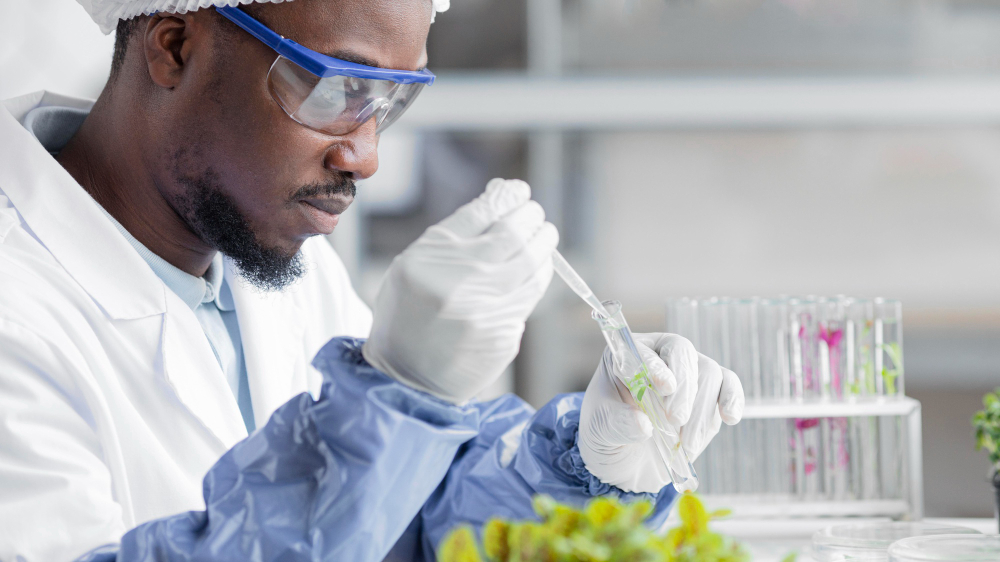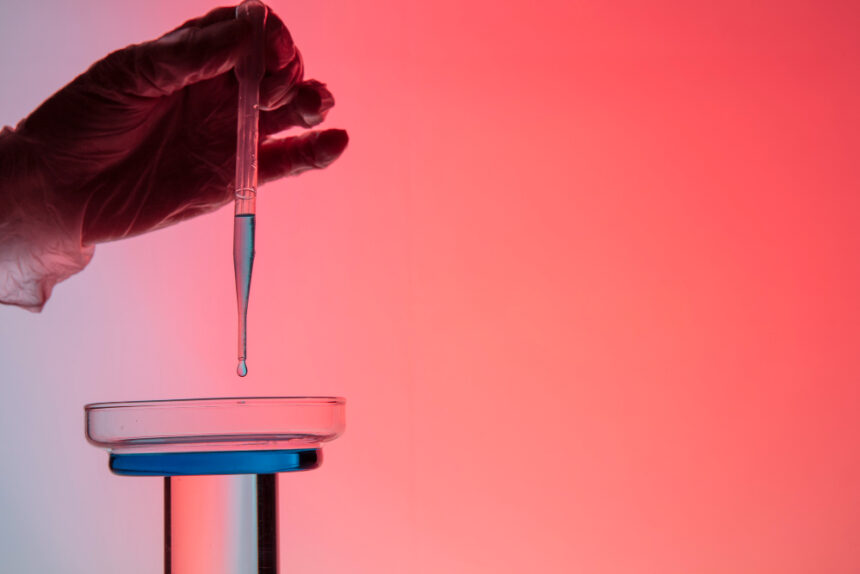RNA isolation is a cornerstone technique in molecular biology, biotechnology, and biomedical research. From gene expression studies to diagnostics and therapeutics, the ability to reliably extract high-quality RNA is essential. One of the most widely used and effective methods is the single-step acid guanidinium thiocyanate-phenol-chloroform extraction technique, originally popularized in the 1980s. This blog post will walk you through the science, steps, optimization tips, and applications of this technique in modern laboratories.
The Importance of RNA in Modern Biology
Ribonucleic acid (RNA) plays a crucial role in the central dogma of molecular biology. It serves as the intermediary between DNA and proteins, carrying genetic information from the nucleus to the cytoplasm where it’s translated into functional proteins. Isolating RNA allows scientists to study gene expression, understand disease mechanisms, and develop RNA-based treatments like mRNA vaccines.
In clinical and research environments, RNA isolation is an essential step before performing techniques such as RT-PCR, Northern blotting, RNA sequencing, and microarray analysis. Without high-purity RNA, these downstream processes can yield inaccurate results or completely fail.
Challenges in RNA Isolation
Despite being fundamental, RNA isolation can be quite challenging. RNA is highly susceptible to degradation due to ubiquitous RNases—enzymes that rapidly degrade RNA molecules. Contamination from DNA, proteins, or chemicals can further hinder downstream applications. Therefore, having a reliable, reproducible, and relatively straightforward method is critical.
That’s where the acid guanidinium thiocyanate-phenol-chloroform extraction technique shines.
Historical Background of the Acid Guanidinium Thiocyanate-Phenol-Chloroform Method
The Emergence of a Revolutionary Technique
This method was developed by Chomczynski and Sacchi in 1987. It introduced a single-step protocol for RNA isolation using a combination of acid guanidinium thiocyanate (GTC), phenol, and chloroform. Before its invention, RNA extraction was labor-intensive and involved multiple precipitation and purification steps.
By combining these reagents into a one-tube process, the new method significantly reduced RNA degradation and increased yield and purity. It rapidly gained popularity due to its efficiency and simplicity and remains a gold standard for RNA extraction in many labs today.
How It Differs From Other RNA Isolation Methods
While commercial kits have made RNA isolation faster, they often rely on silica membrane spin columns and are more expensive. The acid GTC-phenol-chloroform method, in contrast, is cost-effective, allows better control over conditions, and is highly adaptable for various sample types—making it an ideal choice for large-scale and customized RNA isolation workflows.
Chemical Basis of the Method
Role of Acid Guanidinium Thiocyanate
Guanidinium thiocyanate is a strong chaotropic agent that denatures proteins, including RNases. This makes it essential for preserving RNA integrity during extraction. It disrupts hydrogen bonding, thereby inactivating enzymes and solubilizing cellular components.
In the acidic environment of the solution, DNA and proteins become less soluble, while RNA remains in the aqueous phase. This selective solubility is key to separating RNA from other macromolecules.
Function of Phenol and Chloroform
Phenol helps denature proteins and separate them from nucleic acids. In the presence of chloroform and acidic pH, phenol enhances phase separation during centrifugation. The mixture forms a biphasic system where:
- The aqueous phase (top layer) contains RNA.
- The interphase holds DNA and proteins.
- The organic phase (bottom) contains denatured proteins and lipids.
The use of acidified phenol ensures that DNA precipitates with the proteins, leaving RNA in the upper phase, ready for precipitation.
Step-by-Step Guide to RNA Isolation Using This Method
1. Sample Preparation
Begin by collecting your biological sample (cells, tissue, etc.). Ensure that samples are either freshly harvested or properly preserved—commonly in RNA stabilization reagents or flash-frozen in liquid nitrogen.
Homogenize the sample thoroughly in the guanidinium thiocyanate-containing lysis buffer to release cellular contents and inactivate RNases.
2. Phase Separation
Add an equal volume of acidified phenol and a smaller volume of chloroform to the homogenate. Vigorously shake the tube for 15 seconds and incubate it at room temperature for 5 minutes.
Centrifuge the mixture at high speed (typically 12,000 x g) for 15 minutes at 4°C. This results in the formation of three distinct layers.
3. RNA Precipitation
Carefully collect the upper aqueous phase without disturbing the interphase. Transfer it to a new tube. Add an equal volume of isopropanol to precipitate the RNA. Incubate at –20°C for 10 minutes (or overnight for higher yield).
Centrifuge again to pellet the RNA.
4. Washing and Resuspension
Wash the RNA pellet with 70% ethanol to remove salts and impurities. After a brief centrifugation and air-drying step, dissolve the RNA in RNase-free water or buffer (e.g., DEPC-treated water or TE buffer).
Optimization Tips for Maximum RNA Yield and Quality

Using RNase-Free Equipment
Every step should involve RNase-free consumables and reagents. Autoclaved tubes, barrier pipette tips, and dedicated RNA-only lab spaces are recommended. Surface decontaminants such as RNaseZAP can help eliminate trace contaminants.
Homogenization Techniques
Inefficient homogenization leads to incomplete cell lysis and low RNA yield. Use appropriate tools: mechanical homogenizers for tough tissues, pestles for soft samples, or sonicators for specialized applications.
Phenol Quality and pH Control
Always use phenol that is specifically acidified for RNA extraction (pH 4.0–5.0). Neutral phenol will extract both RNA and DNA, leading to contamination. Also, expired or oxidized phenol can reduce RNA purity and cause yield loss.
Applications of Isolated RNA in Research and Diagnostics
Gene Expression Studies
One of the most common uses of RNA isolation is to study gene expression. Quantitative reverse transcription PCR (RT-qPCR) requires high-quality RNA to generate reliable data. Flawed isolation can produce inconsistent Ct values and affect biological interpretations.
RNA Sequencing (RNA-Seq)
Next-generation sequencing technologies demand ultra-pure RNA. Contaminants like phenol, salts, or DNA can interfere with library preparation and sequencing fidelity. This method yields RNA that meets quality standards (RIN ≥ 8) for transcriptomic profiling.
Diagnostics and Personalized Medicine
In clinical diagnostics, RNA from blood, tissue biopsies, or bodily fluids is used to detect gene fusions, pathogens, and expression signatures. High-quality RNA ensures accurate detection of biomarkers, especially in diseases like cancer, COVID-19, and genetic disorders.
Troubleshooting Common Issues in RNA Isolation
Low RNA Yield
Causes may include incomplete cell lysis, sample loss during phase separation, or inadequate precipitation. Ensure proper homogenization, avoid disturbing the interphase, and optimize precipitation steps.
RNA Degradation
Degraded RNA often results from RNase contamination or prolonged sample handling. Use inhibitors, keep samples cold, and work swiftly. Always verify RNA integrity using gel electrophoresis or bioanalyzer systems.
Contaminant Presence
Phenol carry-over or salt contamination can be detected by A260/A280 and A260/A230 absorbance ratios. If purity is low, additional ethanol washes or column cleanup steps may be needed.
Comparative Analysis With Commercial RNA Isolation Kits
Advantages of the Acid GTC-Phenol-Chloroform Method
- Cost-effectiveness: Ideal for high-throughput labs or researchers on a budget.
- Flexibility: Adaptable for various sample types and volumes.
- Control: Offers manual control over every parameter, allowing troubleshooting and customization.
Limitations Compared to Kits
- Time-consuming: Takes longer than spin column methods.
- Hazardous chemicals: Requires handling toxic and volatile substances.
- Skill-dependent: Success depends on meticulous technique and consistency.
Environmental and Safety Considerations
Handling and Disposal of Hazardous Chemicals
Phenol and chloroform are toxic, volatile, and potentially carcinogenic. Always use them in fume hoods with appropriate PPE (lab coat, gloves, goggles). Dispose of chemical waste according to institutional and governmental safety regulations.
Minimizing Environmental Impact
Where possible, reduce reagent volumes and use less hazardous alternatives (e.g., TRIzol-like reagents that contain less phenol). Recycling programs and green chemistry alternatives are emerging for RNA isolation workflows.
Future of RNA Isolation Techniques
Automation and High-Throughput Solutions
Automated systems using magnetic beads and robotic pipetting are revolutionizing RNA isolation. These platforms increase reproducibility, reduce human error, and are ideal for large-scale projects like genomics or clinical diagnostics.
Integration With AI and Bioinformatics
RNA isolation is no longer just a lab procedure—it feeds into complex data pipelines. Artificial intelligence tools are now analyzing RNA expression data to predict disease outcomes, identify drug targets, and personalize therapies.
Innovations in RNA Stabilization
New preservatives and stabilization solutions now allow field collection of samples without immediate freezing, making RNA research more accessible in remote or resource-limited settings.
Conclusion
The single-step acid guanidinium thiocyanate-phenol-chloroform RNA isolation method remains a foundational protocol in molecular biology. Its reliability, affordability, and efficiency make it a continued favorite despite the emergence of modern kits and automation.
Whether you’re a beginner working on your first RNA extraction or a seasoned scientist managing dozens of samples, mastering this technique provides a deep understanding of nucleic acid chemistry and improves your control over experimental outcomes.
By combining careful planning, stringent contamination control, and methodological precision, this technique will continue to support groundbreaking discoveries in genomics, medicine, and beyond.
Final Thoughts
RNA isolation is more than just a lab protocol—it’s the gateway to understanding life at the molecular level. The methods and best practices discussed here provide a robust framework for isolating high-quality RNA that meets the stringent demands of modern research.
If you’re looking to set up your own protocol, remember that precision, cleanliness, and consistency are your best allies. With these in hand, the world of transcriptomics is at your fingertips.

